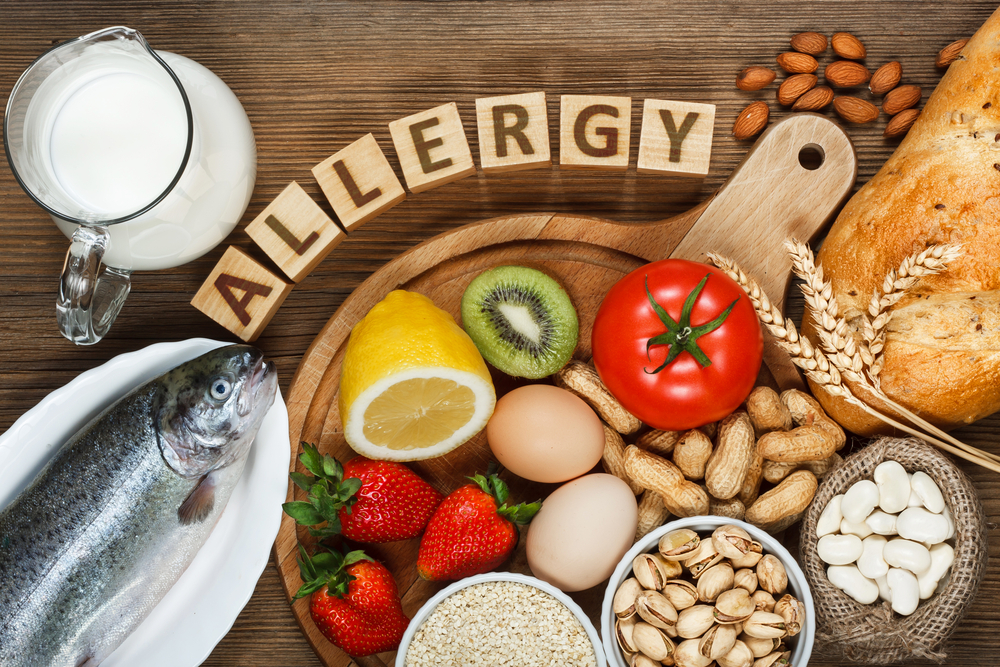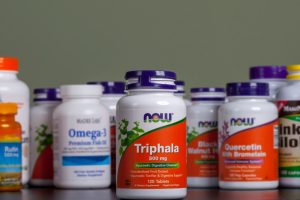Have you ever felt an unpleasant reaction after having a particular food? Do you feel your stomach getting upset or rashes appearing on the skin after eating something? This could be due to an allergic reaction to that food. Other than allergy to medications, food allergy can occur to individuals as well. Read on to find out more.
What is food allergy?
Food allergy is a condition in which your body’s immune system reacts abnormally to certain ingredients present in the food. The body’s immune system mistakenly recognises those ingredients as harmful and takes its own protective measures. This includes releasing certain chemicals like histamine, which cause inflammation and the symptoms of an allergic reaction.
The ingredient that causes an allergy is called an allergen. Even a small exposure to the allergen is enough to trigger an allergic reaction in sensitive people.
What are the symptoms of food allergy?
The symptoms of food allergy vary from person to person. For some, the allergy will be so mild that they hardly notice. For others, it can be severe and life-threatening.
The most common symptoms of food allergy are:
- Stomach pain and diarrhoea
- Nausea or vomiting
- Itchy skin rash
- Itching or tingling sensation inside the mouth
- Swelling of the lips, tongue, and face
- Dizziness and fainting
A severe allergic reaction is called anaphylaxis. This can cause life-threatening symptoms like tightening of the windpipe and difficulty breathing, high blood pressure, and rapid pulse.
Which are the most common foods causing allergy?
Eggs
In Asia, eggs are the most common food item that cause allergic reactions in children below five years of age. However, majority of kids outgrow egg allergy once they are 16 years old.
The main symptoms of egg allergy are stomach pain, skin rashes, and respiratory problems. Some children may be allergic to egg white, whereas some may be allergic to the yolk. This is because the protein content in yolk and egg white varies. The best treatment for an egg allergy is to follow an egg-free diet.
Cow’s milk
Allergy to cow’s milk is the second most common food allergy found in Asia. It is mostly observed in babies and young children who are exposed to cow’s milk before six months of age. But the good thing about this allergy is that almost 90% of kids outgrow this allergy once they turn three years old. Thus, cow milk allergy is not very common among adults.
The only treatment for this type of allergy is to avoid taking cow’s milk and food containing cow’s milk. This includes butter, cheese, yogurt, and ice cream, in which cow’s milk is the main ingredient.
Shellfish
This is a common type of allergy found in older children and adults in Asia. For some people, the body reacts against the protein found in shellfish resulting in an allergy. Shellfish includes shrimp, prawn, lobster, squid, and crayfish.
The most common symptoms of shellfish allergy are diarrhoea and vomiting. For those who are allergic to shellfish, even vapour from the cooking of shellfish can trigger an allergic reaction. A noteworthy feature of shellfish allergy is that it does not subside over time. Thus, people who are allergic to shellfish should abstain from it throughout their life.
Nuts
Nuts including cashew nut, almond, walnut, and peanut can cause allergic reactions. But the incidence of nut allergies in Asian countries is less when compared to the Western countries. This is because children in these regions are exposed to different types of nuts from a very early age, to which they develop tolerance.
Those who are allergic to nuts will also be sensitive to food products containing nuts. Similarly, if you are allergic to any particular nut, the chances are high that you will be sensitive to other types of nuts as well. Thus, it is best to refrain from food containing any type of nut.
Wheat
There is a stark difference in wheat allergy reported throughout Asia, with Japan having the highest incidence of wheat allergy. The reason for this difference could be attributed to how wheat is processed and cooked.
Wheat allergy involves the body’s reaction to one of the proteins present in wheat. This type of allergy mostly affects children, and they are likely to outgrow it in the future. The main symptoms of wheat allergy include stomach pain, vomiting, and diarrhoea. The best way to treat this allergy is to stay away from food items containing wheat.
Fish
Fish allergy is not a very common allergy found in Asia, though a few cases are reported in the Philippines. Unlike other forms of allergy, fish allergy can develop later on in life. The main symptoms of fish allergy include diarrhoea and vomiting.
A notable feature about fish allergy is that a person who is allergic to fish may not be allergic to shellfish. This is because the protein present in both fish and shellfish are different.
How to treat food allergy?
The best way to prevent an allergic reaction is to identify and avoid the food that triggers the allergy.
Antihistamines can help relieve the symptoms of a mild or moderate allergic reaction.
For more severe allergic symptoms such as anaphylaxis, adrenaline is an effective treatment that reverses the effects of the allergy. It is usually administered via injection with an Epi-pen. As such, people with serious food allergies are often advised to carry the auto-injector Epi-pen with them at all times, to deliver a life-saving shot of adrenaline in emergencies.
Final thought
Though most food allergies develop during childhood and go away with time, certain allergies, like a fish allergy can develop anytime. If you find that your body reacts unusually to a certain food, it is best to get an allergy test done. This helps you to figure out the root cause of allergy and change your diet accordingly.












